Dynamic Impedance Estimation: Challenges and Considerations
Abstract
1. Introduction
2. Transducers Online Equalization
2.1. A. Transducer Equalization Review
2.2. Adaptive Transducers Equalization
2.3. Illustrative Results
| Algorithm 1 The switching time instants to update the parameterization are integer multiples of a prefixed basic minimum constant sampling interval |
| 1 Inputs: |
| 2 x[n] the voltage (or current) at secondary of VT (or CT) |
| 3 d(n) the voltage (or current) at secondary of the reference VT (or CT) |
| 4 Hpq(z) the transfer function between bus p and q |
| 5 Initialization: |
| 6 , |
| 7 , or initializes with prior knowledge |
| 8 M order of the equalizer |
| 9 N size for FFT |
| 10 For Do: |
| 11 |
| 12 |
| 13 |
| 14 |
| 15 16 17 |
| 18 No convergence obtained then go to 3.1 |
| 19 Convergence is obtained at |
| 20 Y= |
| 21 Compute FFT(Y) |
| 22 Go to 3.1 |
2.4. Where to Go
- What is the influence of the estimation error of the transfer function of the Hp,q(z) system on the design of the equalizer? This point is essential, as it is known that the transfer function obtained from design data can present significant variations from the real system. The ideal would be to estimate these transfer functions by online procedure, but this falls into the process of recursive error (tail-chasing);
- On which bus, or buses, of the system should the reference meters be installed? This question seems similar to another one already addressed in the literature, which concerns the points of the network for PQ meters allocation;
- In telecommunications systems, it is common to use the blind equalization strategy [23]. The question is whether it is possible to use the same strategy for equalizing transducers.
3. Harmonic Synchrophasor Estimation
3.1. Review Harmonic Synchrophasor Estimation
3.2. Illustrative Results
3.3. Where to Go
- Develop resampling algorithms to ensure synchronous sampling that is robust to additive noise or to evaluate noise reduction techniques in pre-processing;
- Investigate the effect of the delay of the frequency estimation on the interpolation performance over time. Since the frequency value used in the resampling process is always delayed about the current frequency value;
- Define standards for HSpE, such as the TVE error allowed, the dynamic test conditions, the report’s rate, etc.
4. Dynamic Impedance Estimation
4.1. Impedance Estimation at PCC
4.2. Illustrative Results
4.3. Active Impedance Estimation Method
4.4. Illustrative Results
4.5. Harmonic Amplification
5. Conclusions
Author Contributions
Funding
Institutional Review Board Statement
Informed Consent Statement
Data Availability Statement
Acknowledgments
Conflicts of Interest
References
- Stiegler, R.; Meyer, J.; Kilter, J.; Konzelmann, S. Assessment of voltage instrument transformers accuracy for harmonic measurements in transmission systems. In Proceedings of the 2016 17th International Conference on Harmonics and Quality of Power (ICHQP), Belo Horizonte, Brazil, 16–19 October 2016; pp. 152–157. [Google Scholar]
- Crotti, G.; Gallo, D.; Giordano, D.; Landi, C.; Luiso, M.; Modarres, M. Frequency Response of MV Voltage Transformer under Actual Waveforms. IEEE Trans. Instrum. Meas. 2017, 66, 1146–1154. [Google Scholar] [CrossRef]
- Crotti, G.; Gallo, D.; Giordano, D.; Landi, C.; Luiso, M. A Characterized Method for the Real-Time Compensation of Power System Measurement Transducers. IEEE Trans. Instrum. Meas. 2015, 64, 1398–1404. [Google Scholar] [CrossRef]
- Ribeiro, P.F.; Duque, C.A.; Ribeiro, P.M.; Cerqueira, A.S. Power Systems Signal Processing for Smart Grids; John Wiley & Sons: Hoboken, NJ, USA, 2013. [Google Scholar]
- Reddy, M.V.; Sodhi, R. An Open-Loop Fundamental and Harmonic Phasor Estimator for Single-Phase Voltage Signals. IEEE Trans. Ind. Inform. 2020, 16, 4535–4546. [Google Scholar] [CrossRef]
- Cuk, V. Power Quality and EMC Issues with Future Electricity Networks, Joint Working Group C4.24/CIRED; Tech. Brochures; CIGRE: Paris, France, 2018. [Google Scholar]
- Santos, E.; Khosravy, M.; Lima, M.A.A.; Cerqueira, A.S.; Duque, C.A.; Yona, A. High Accuracy Power Quality Evaluation under a Colored Noisy Condition by Filter Bank ESPRIT. Electronics 2019, 8, 1259. [Google Scholar] [CrossRef]
- Santos, E.; Khosravy, M.; Lima, M.A.; Cerqueira, A.S.; Duque, C.A. ESPRIT associated with filter bank for power-line harmonics, sub-harmonics and inter-harmonics parameters estimation. Int. J. Electr. Power Energy Syst. 2020, 118, 105731. [Google Scholar] [CrossRef]
- Aleixo, R.R.; Silva, L.R.; Duque, C.A.; Lima, M.A. Micro-PMU based on Savitzky–Golay filter. IET Gener. Transm. Distrib. 2020, 14, 2092–2099. [Google Scholar] [CrossRef]
- Pegoraro, P.A.; Brady, K.; Castello, P.; Muscas, C.; von Meier, A. Line impedance estimation based on synchrophasor measurements for power distribution systems. IEEE Trans. Instrum. Meas. 2019, 68, 1002–1013. [Google Scholar] [CrossRef]
- Karimzadeh, F.; Esmaeili, S.; Hosseinian, S.H. Method for determining utility and consumer harmonic contributions based on complex independent component analysis. IET Gener. Transm. Distrib. 2016, 10, 526–534. [Google Scholar] [CrossRef]
- Gupta, N.; Garg, R. Algorithm for islanding detection in photovoltaic generator network connected to low-voltage grid. IET Gener. Transm. Distrib. 2018, 12, 2280–2287. [Google Scholar] [CrossRef]
- Wang, W.; Nino, E.E.; Xu, W. Harmonic impedance measurement using a thyristor-controlled short circuit. IET Gener. Transm. Distrib. 2007, 1, 707–713. [Google Scholar] [CrossRef]
- Serfontein, D.; Rens, J.; Botha, G.; Desmet, J. Continuous Event-Based Harmonic Impedance Assessment Using Online Measurements. IEEE Trans. Instrum. Meas. 2016, 65, 2214–2220. [Google Scholar] [CrossRef]
- Monteiro, H.L.; Duque, C.A.; Silva, L.R.; Meyer, J.; Stiegler, R.; Testa, A.; Ribeiro, P.F. Harmonic impedance measurement based on short time current injections. Electr. Power Syst. Res. 2017, 148, 108–116. [Google Scholar] [CrossRef]
- Zhao, J.S.; Yang, H.G.; Pan, A.Q.; Xu, F.W. An improved complex ICA based method for wind farm harmonic emission levels evaluation. Electr. Power Syst. Res. 2020, 179, 106105. [Google Scholar] [CrossRef]
- Zhao, X.; Yang, H.G. A new method to calculate the utility harmonic impedance based on FastICA. IEEE Trans. Power Deliv. 2015, 31, 381–388. [Google Scholar] [CrossRef]
- Xiao, X.Y.; Zheng, X.; Wang, Y.; Xu, S.T.; Zheng, Z.X. A Method for Utility Harmonic Impedance Estimation Based on Constrained Complex Independent Component Analysis. Energies 2018, 11, 2247. [Google Scholar] [CrossRef]
- Collin, A.J.; Delle Femine, A.; Gallo, D.; Langella, R.; Luiso, M. Compensation of current transformers non-linearities by tensor linearization. IEEE Trans. Instrum. Meas. 2019, 68, 3841–3849. [Google Scholar] [CrossRef]
- Faifer, M.; Laurano, C.; Ottoboni, R.; Toscani, S.; Zanoni, M. Harmonic distortion compensation in voltage transformers for improved power quality measurements. IEEE Trans. Instrum. Meas. 2019, 68, 3823–3830. [Google Scholar] [CrossRef]
- Haykin, S.S. Adaptive Filter Theory; Pearson Education: New York, NJ, USA, 2008. [Google Scholar]
- IEEE 15BUS. Simulink Model of IEEE 15 Bus Radial Network Power System with Load Flow. Available online: https://www.mathworks.com/matlabcentral/fileexchange/48104-ieee-15-bus-radial-system (accessed on 20 October 2020).
- IEEE. C37.118.2b—IEEE Standard for Synchrophasors Data Transfer for Power Systems. 2011. Available online: https://ieeexplore.ieee.org/document/6111222 (accessed on 20 October 2020).
- Miller, A.J.V.; Dewe, M.B. Multichannel continuous harmonic analysis in real-time. IEEE Trans. Power Deliv. 1992, 7, 1813–1819. [Google Scholar] [CrossRef]
- Carta, A.; Locci, N.; Muscas, C. A PMU for the measurement of synchronized harmonic phasors in three-phase distribution networks. IEEE Trans. Instrum. Meas. 2009, 58, 3723–3730. [Google Scholar] [CrossRef]
- Chakir, M.; Kamwa, I.; Le, H. Extended C37. 118.1 PMU algorithms for joint tracking of fundamental and harmonic phasors in stressed power systems and microgrids. IEEE Trans. Power Deliv. 2014, 29, 1465–1480. [Google Scholar]
- Belega, D.; Fontanelli, D.; Petri, D. Dynamic phasor and frequency measurements by an improved Taylor weighted least squares algorithm. IEEE Trans. Instrum. Meas. 2015, 64, 2165–2178. [Google Scholar] [CrossRef]
- Narduzzi, C.; Bertocco, M.; Frigo, G.; Giorgi, G. Fast-TFM—Multifrequency phasor measurement for distribution networks. IEEE Trans. Instrum. Meas. 2018, 67, 1825–1835. [Google Scholar] [CrossRef]
- Chen, L.; Zhao, W.; Wang, F.; Huang, S. Harmonic Phasor Estimator for P-Class Phasor Measurement Units. IEEE Trans. Instrum. Meas. 2019, 69, 1556–1565. [Google Scholar] [CrossRef]
- Kapil, C.R.; Venkateswara, M. SODHI, Ranjana. A novel distribution-level phasor estimation algorithm using empirical wavelet transform. IEEE Trans. Ind. Electron. 2018, 65, 7984–7995. [Google Scholar]
- Akke, M.; Thorp, J.S. Sample value adjustment improves phasor estimation at off-nominal frequencies. IEEE Trans. Power Deliv. 2010, 25, 2255–2263. [Google Scholar] [CrossRef]
- Banerjee, P.; Srivastava, S.C. A subspace-based dynamic phasor estimator for synchrophasor application. IEEE Trans. Instrum. Meas. 2012, 61, 2436–2445. [Google Scholar] [CrossRef]
- Romano, P.; Paolone, M. Enhanced interpolated-DFT for synchrophasor estimation in FPGAs: Theory, implementation, and validation of a PMU prototype. IEEE Trans. Instrum. Meas. 2014, 63, 2824–2836. [Google Scholar] [CrossRef]
- Derviškadić, A.; Romano, P.; Paolone, M. Iterative-interpolated DFT for synchrophasor estimation: A single algorithm for P-and M-class compliant PMUs. IEEE Trans. Instrum. Meas. 2017, 67, 547–558. [Google Scholar] [CrossRef]
- Maharjan, S.; Peng, J.C.; Martinez, J.E.; Xiao, W.; Huang, P.H.; Kirtley, J.L. Improved sample value adjustment forsynchrophasor estimation at off-nominal power system conditions. IEEE Trans. Power Deliv. 2016, 32, 33–44. [Google Scholar] [CrossRef]
- STMicroelectronics. AN4629—ADC Hardware Oversampling for Microcontrollers of the STM32 L0 and L4 Series. 2015. Available online: https://webcache.googleusercontent.com/search?q=cache:w20OnufUuqcJ:https://www.st.com/resource/en/application_note/dm00150423-adc-hardware-oversampling-for-microcontrollers-of-the-stm32-l0-and-l4-series-stmicroelectronics.pdf+&cd=1&hl=zh-CN&ct=clnk (accessed on 20 October 2020).
- Mitra, S.K.; Kuo, Y. Digital Signal Processing: A Computer-Based Approach; McGraw-Hill: New York, NY, USA, 2006. [Google Scholar]
- Safargholi, F.; Malekian, K.; Schufft, W. On the dominant harmonic source identification—Part I: Review of methods. IEEE Trans. Power Deliv. 2017, 33, 1268–1277. [Google Scholar] [CrossRef]
- Xu, F.; Yang, H.; Zhao, J.; Wang, Z.; Liu, Y. Study on constraints for harmonic source determination using active power direction. IEEE Trans. Power Deliv. 2018, 33, 2683–2692. [Google Scholar]
- Karimzadeh, F.; Esmaeili, S.; Hosseinian, S.H. A novel method for non-invasive estimation of utility harmonic impedance based on complex independent component analysis. IEEE Trans. Power Deliv. 2015, 30, 1843–1852. [Google Scholar] [CrossRef]
- Monteiro, H.L.; de Oliveira, M.M.; de Oliveira, R.R.; Silva, L.R.; Duque, C.A. Harmonic impedance estimation in frequency deviation scenario. In Proceedings of the 2018 18th International Conference on Harmonics and Quality of Power (ICHQP), Ljubljana, Slovenia, 13–16 May 2018. [Google Scholar]
- Monteiro, H.L.; de Oliveira, M.M.; Aleixo, R.R.; Duque, C.A.; Ribeiro, P.F. A real time implementation of a harmonic impedance estimator. In Proceedings of the 2016 17th International Conference on Harmonics and Quality of Power (ICHQP), Belo Horizonte, Brazil, 16–19 October 2016. [Google Scholar]
- Borkowski, D. A new method for non-invasive measurement of grid harmonic impedance with data selection. Int. Trans. Electr. Energy Syst. 2015, 25, 3772–3791. [Google Scholar] [CrossRef]
- Zheng, X.; Liu, Y.M.; Chen, F.Y.; Xu, S.T.; Xiao, X.Y. A comparison of typical non-invasive method for utility harmonic impedance estimation. In Proceedings of the 2018 18th International Conference on Harmonics and Quality of Power (ICHQP), Ljubljana, Slovenia, 13–16 May 2018. [Google Scholar]
- Sinvula, R.; Abo-Al-Ez, K.M.; Kahn, M.T. Harmonic source detection methods: A systematic literature review. IEEE Access 2019, 7, 74283–74299. [Google Scholar] [CrossRef]
- Wilsun, X.; Liu, Y. A method for determining customer and utility harmonic contributions at the point of common coupling. IEEE Trans. Power Deliv. 2000, 15, 804–811. [Google Scholar] [CrossRef]
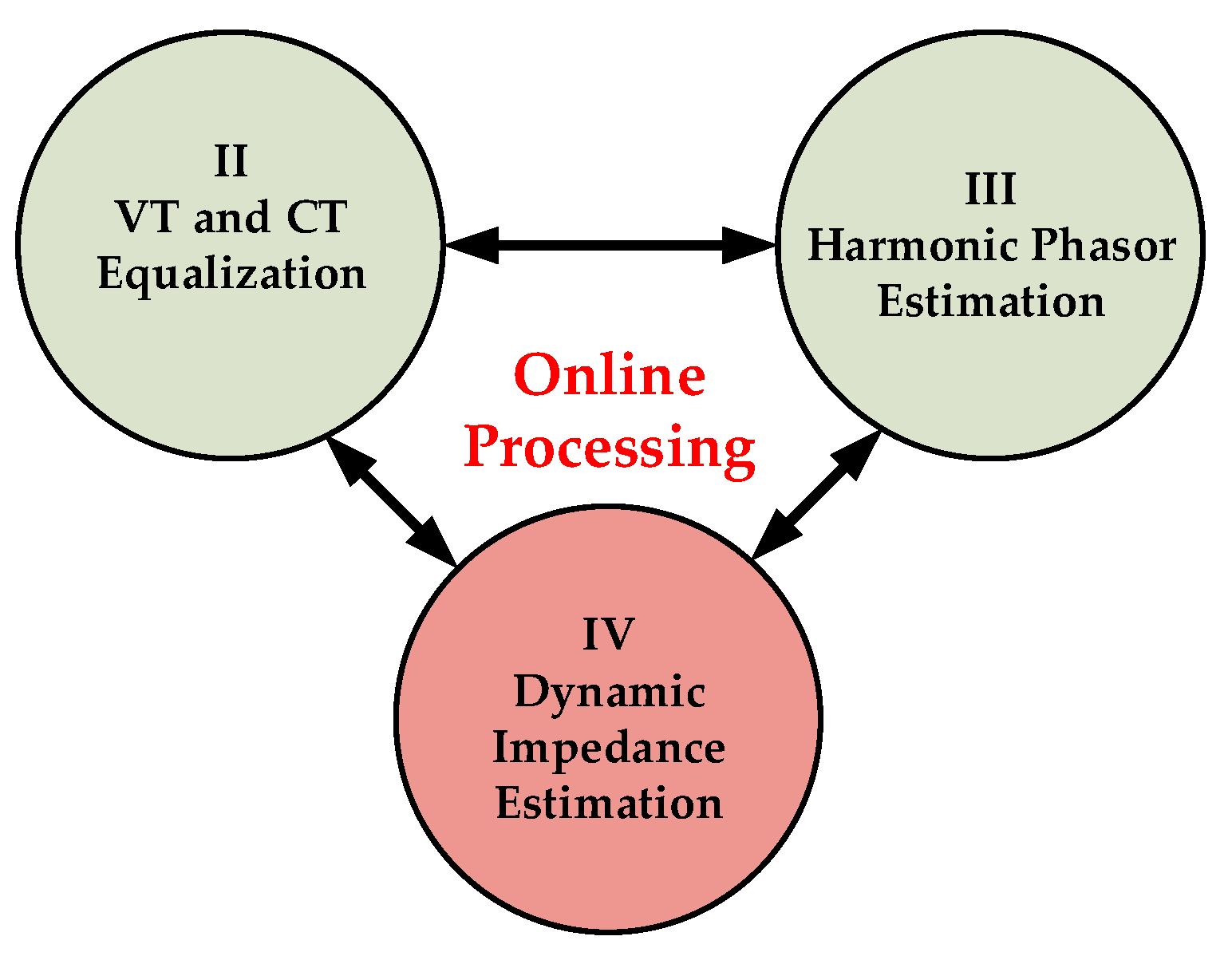


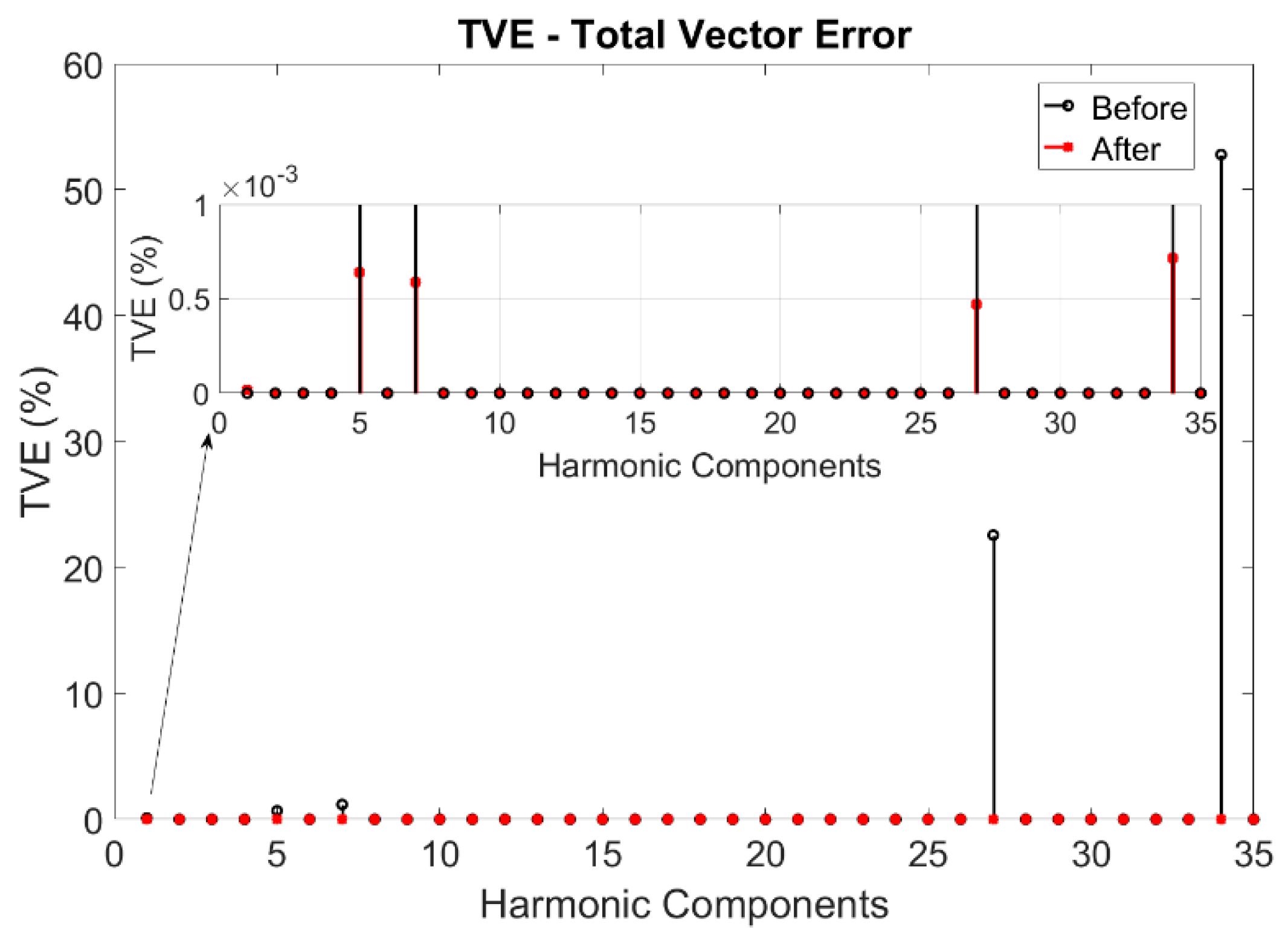


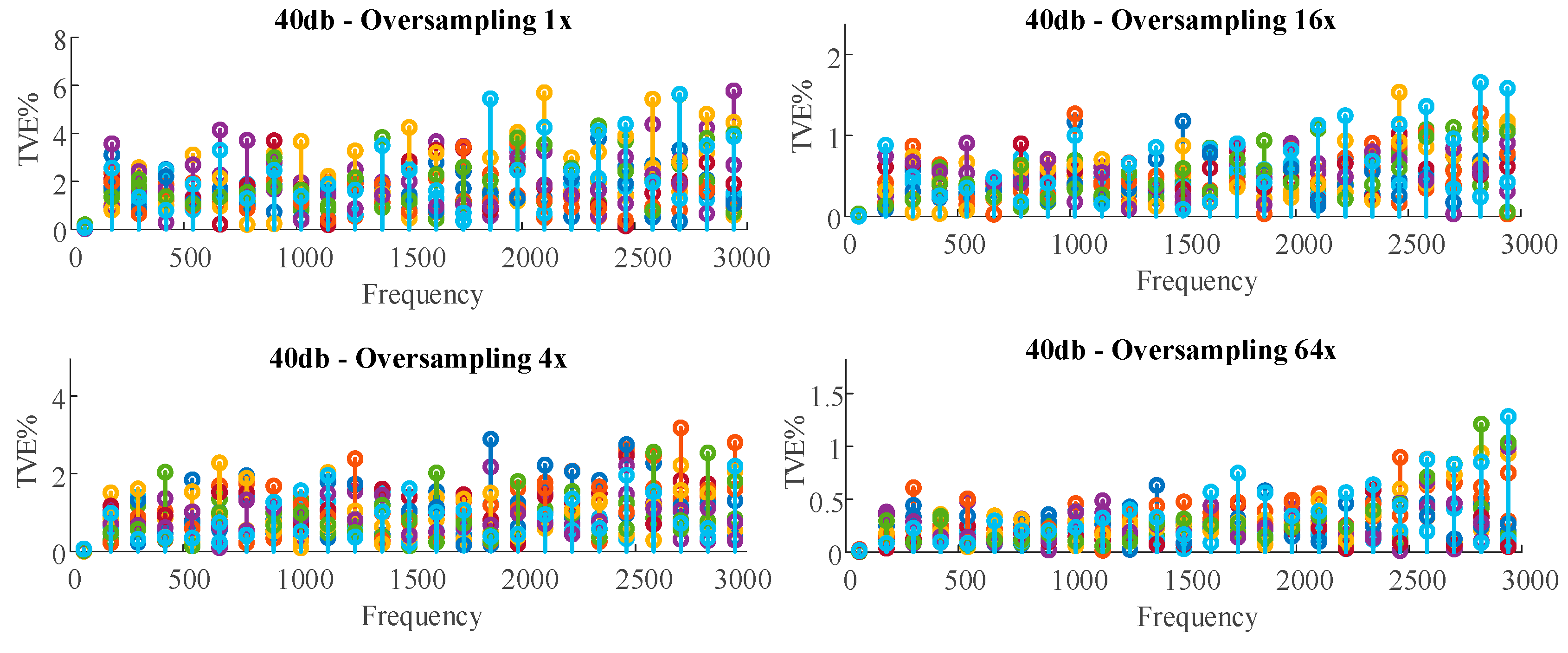

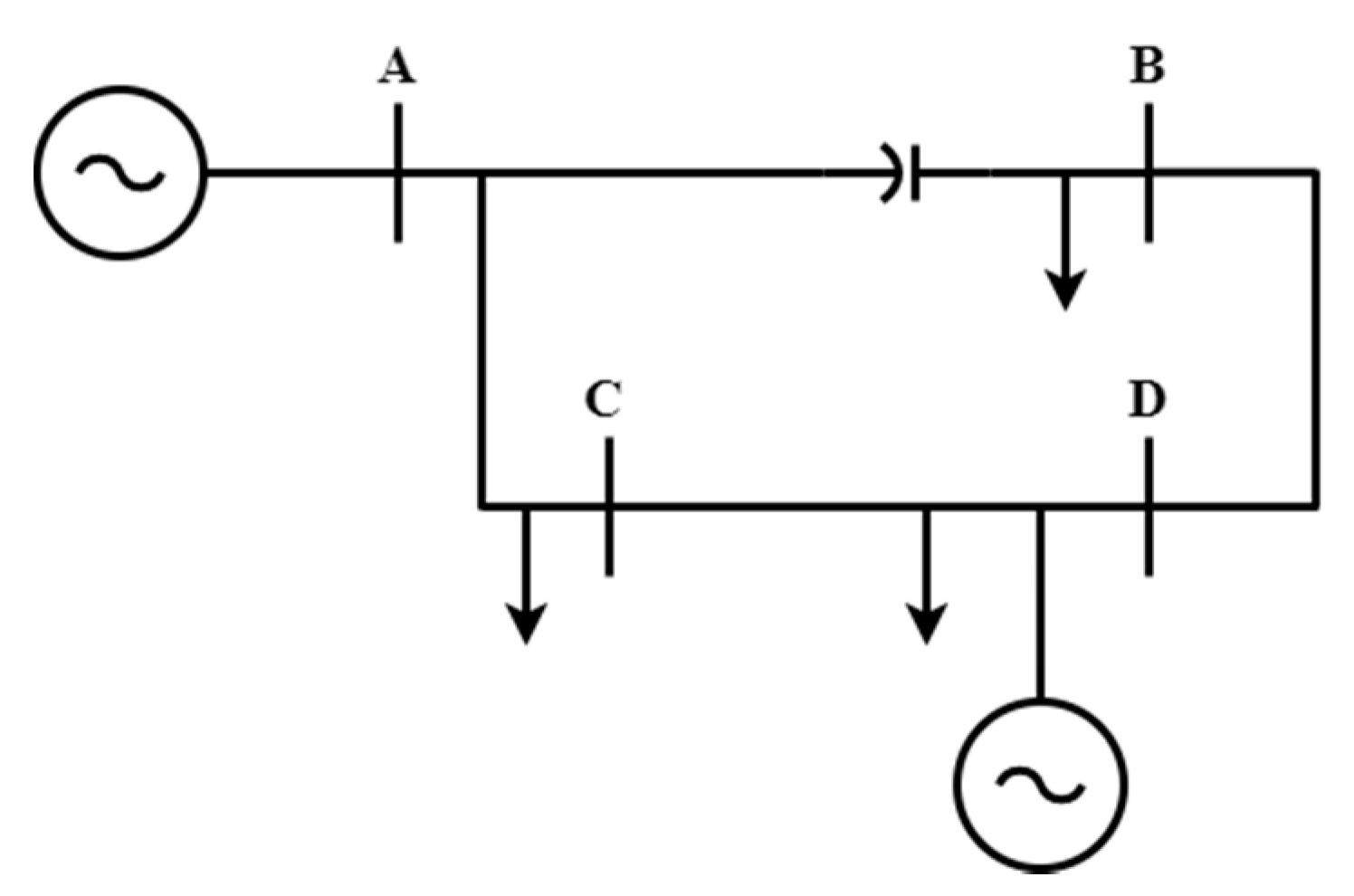
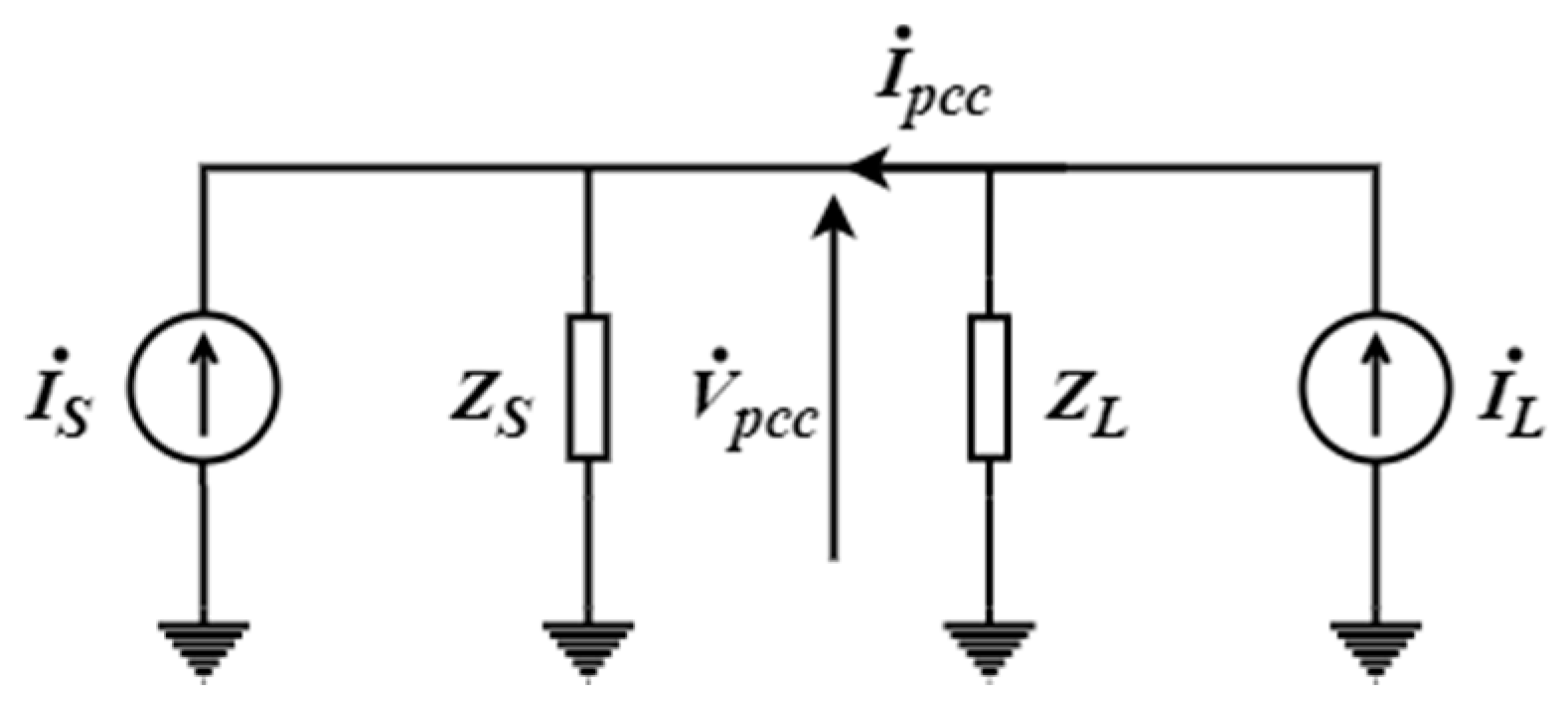
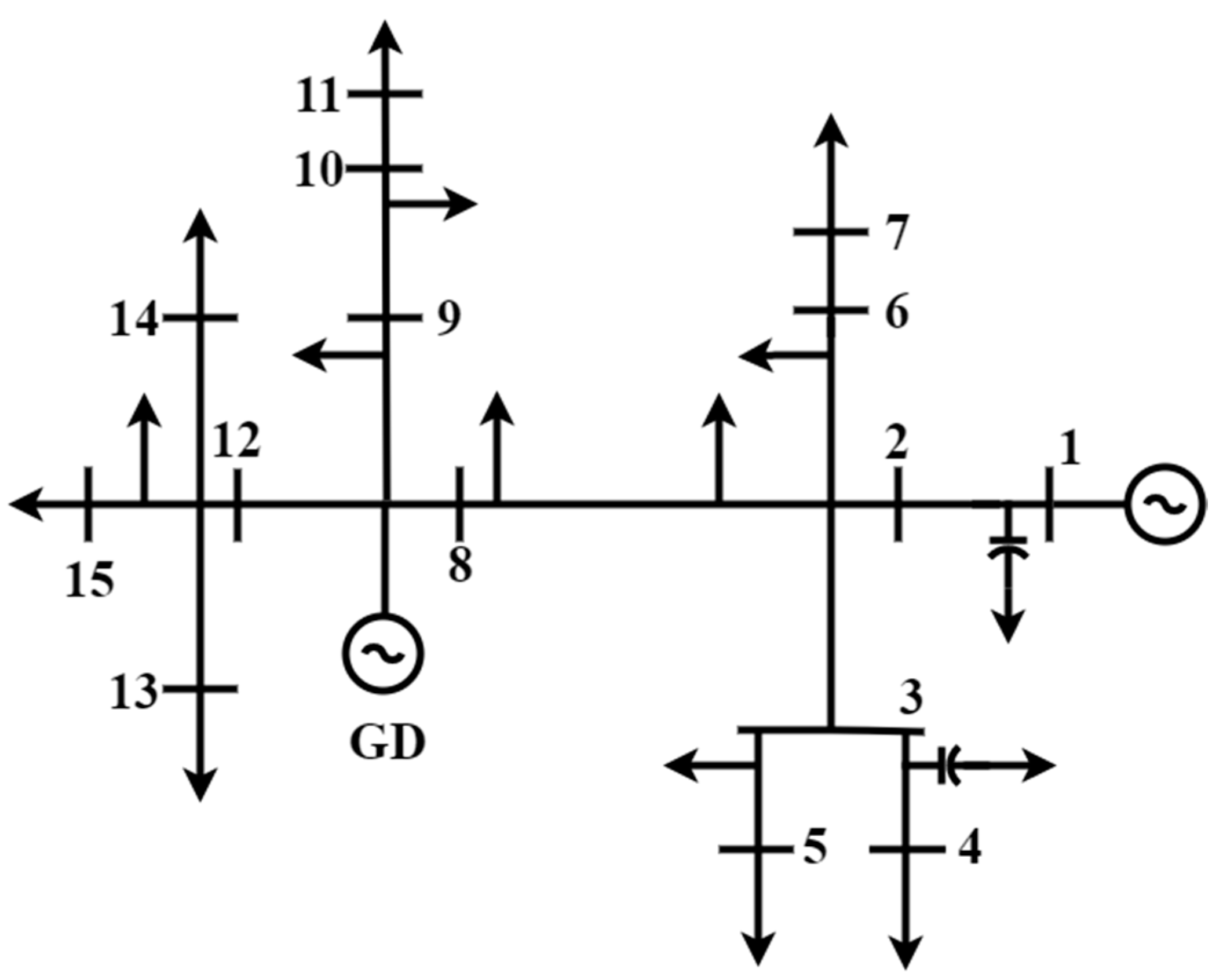
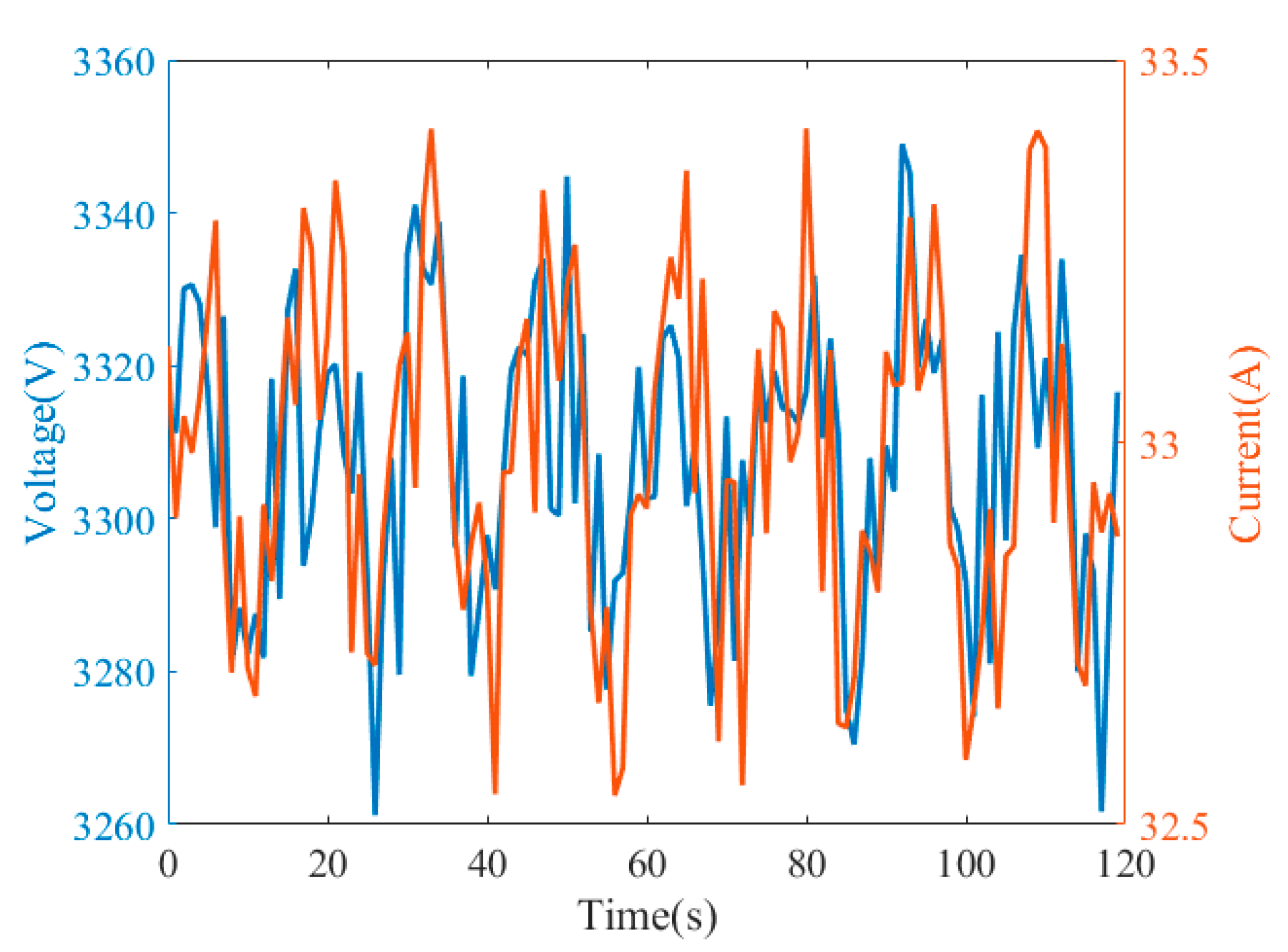
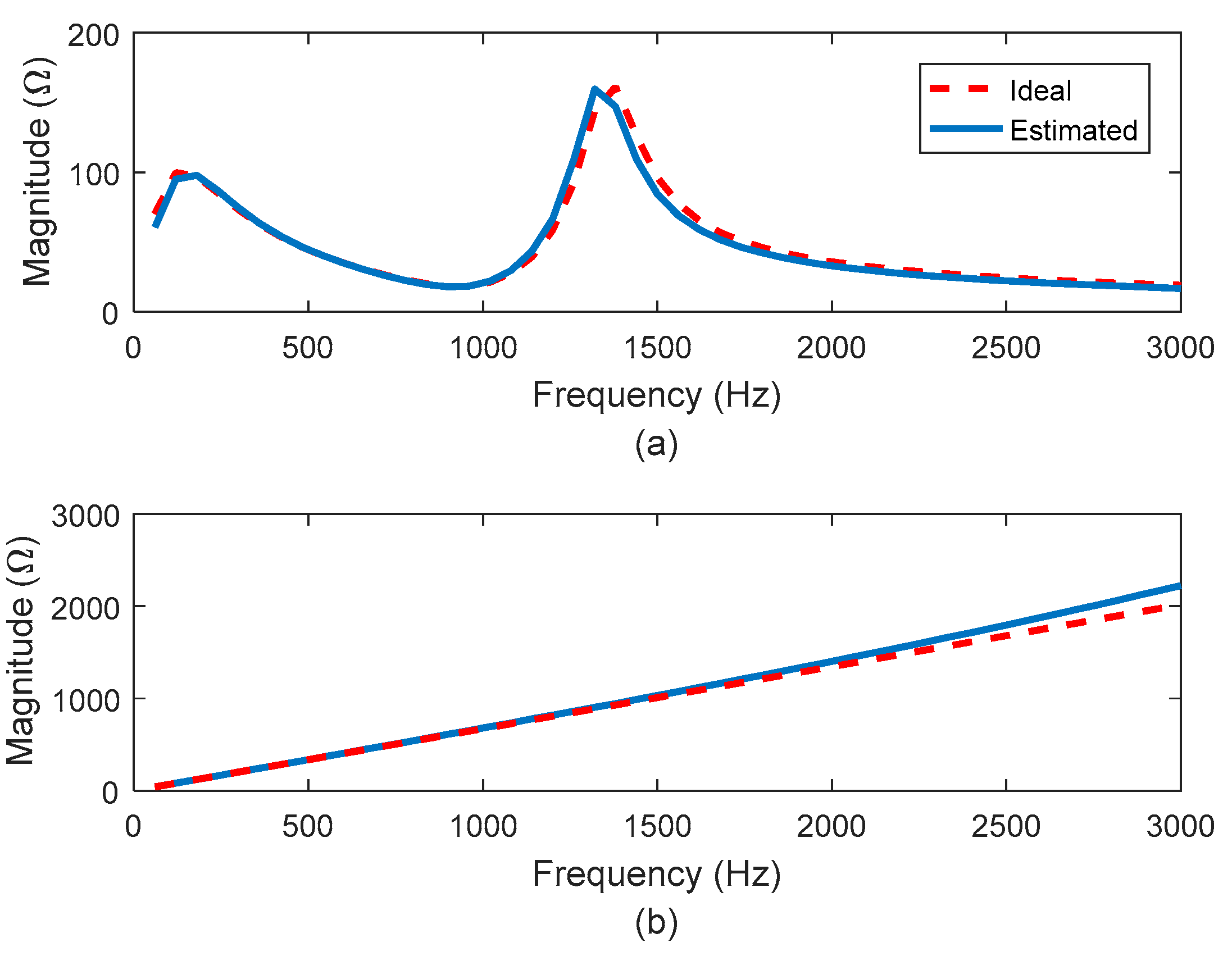
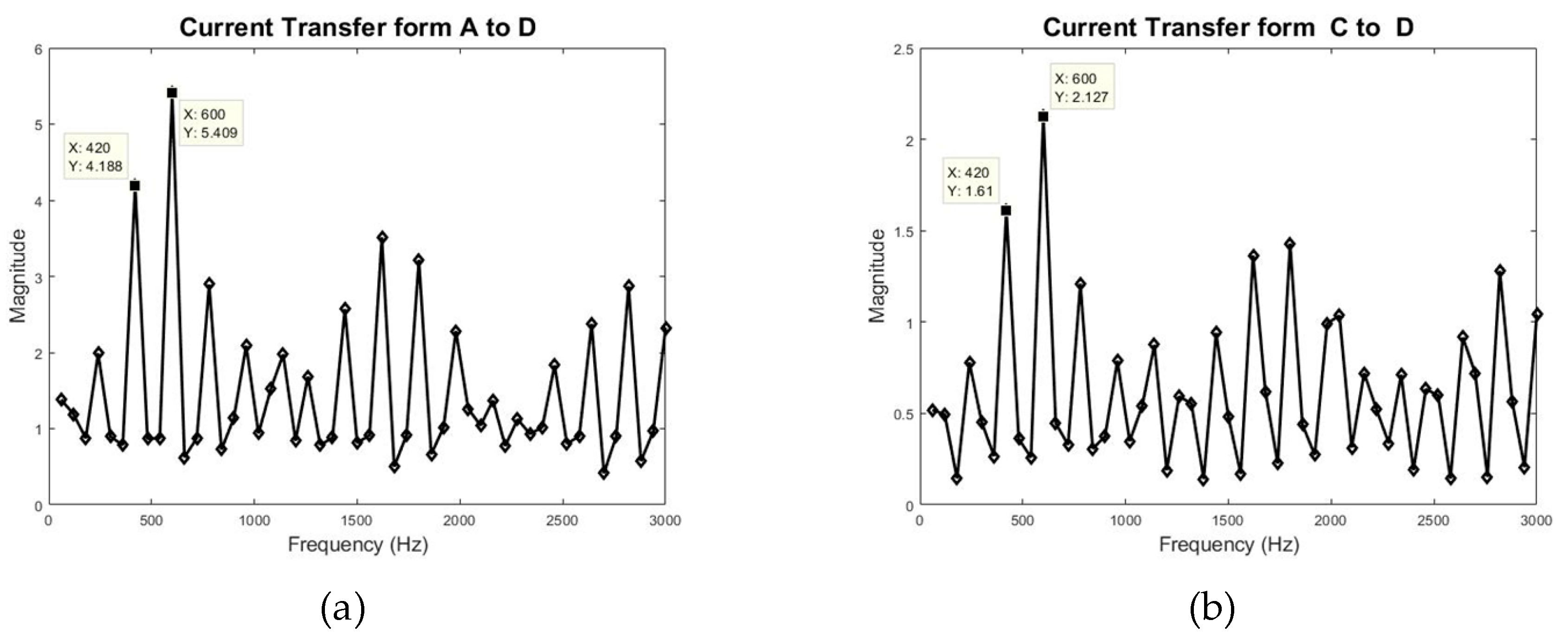

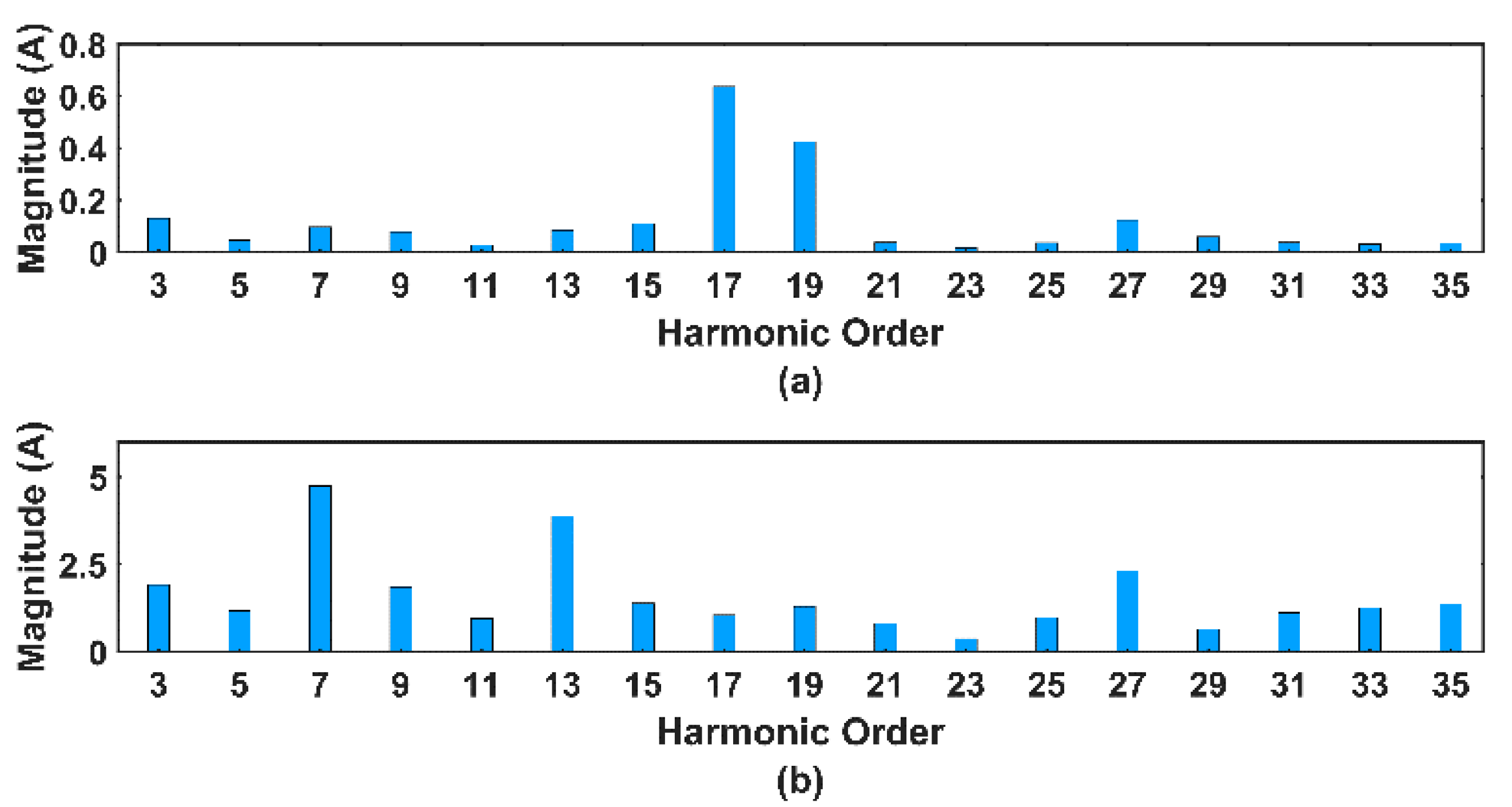
Publisher’s Note: MDPI stays neutral with regard to jurisdictional claims in published maps and institutional affiliations. |
© 2021 by the authors. Licensee MDPI, Basel, Switzerland. This article is an open access article distributed under the terms and conditions of the Creative Commons Attribution (CC BY) license (http://creativecommons.org/licenses/by/4.0/).
Share and Cite
de Oliveira, M.M.; Aleixo, R.R.; Resende, D.F.; Silva, L.R.M.; Salles, R.S.; Duque, C.A.; Ribeiro, P.F. Dynamic Impedance Estimation: Challenges and Considerations. Appl. Sci. 2021, 11, 558. https://doi.org/10.3390/app11020558
de Oliveira MM, Aleixo RR, Resende DF, Silva LRM, Salles RS, Duque CA, Ribeiro PF. Dynamic Impedance Estimation: Challenges and Considerations. Applied Sciences. 2021; 11(2):558. https://doi.org/10.3390/app11020558
Chicago/Turabian Stylede Oliveira, Mateus M., Renato R. Aleixo, Denise F. Resende, Leandro R. M. Silva, Rafael S. Salles, Carlos A. Duque, and Paulo F. Ribeiro. 2021. "Dynamic Impedance Estimation: Challenges and Considerations" Applied Sciences 11, no. 2: 558. https://doi.org/10.3390/app11020558
APA Stylede Oliveira, M. M., Aleixo, R. R., Resende, D. F., Silva, L. R. M., Salles, R. S., Duque, C. A., & Ribeiro, P. F. (2021). Dynamic Impedance Estimation: Challenges and Considerations. Applied Sciences, 11(2), 558. https://doi.org/10.3390/app11020558







